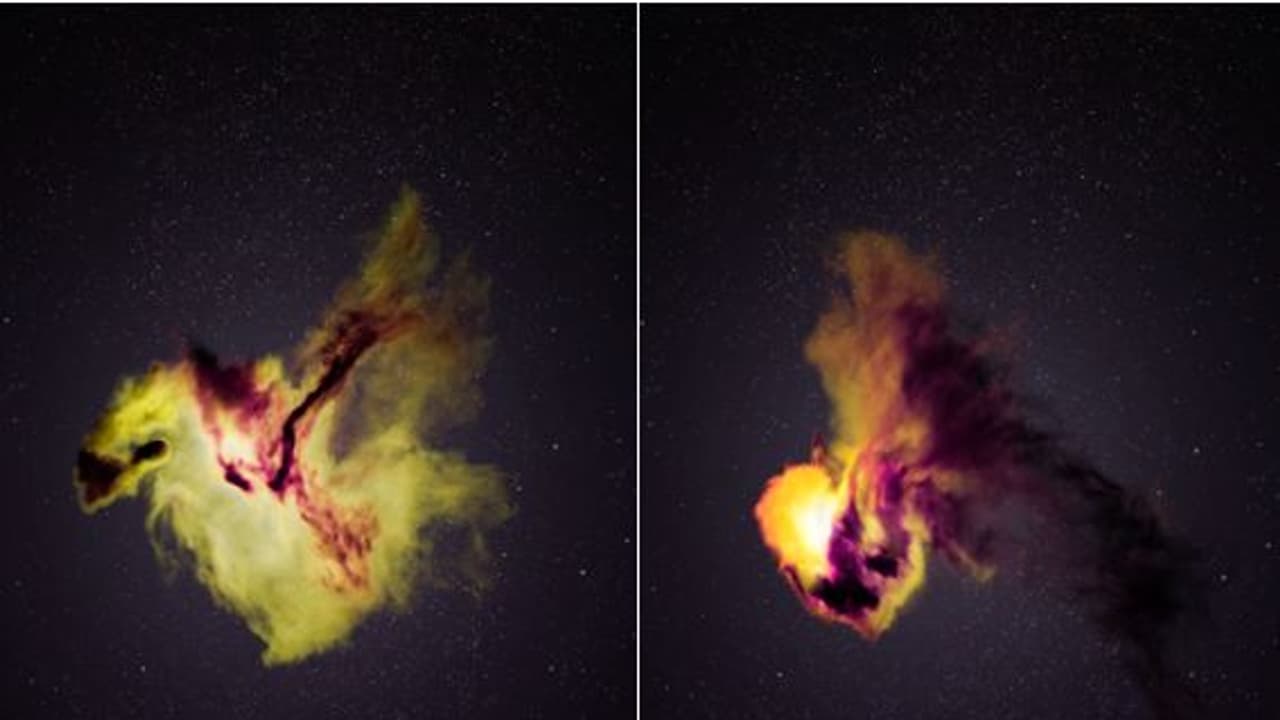Astronomers have discovered a never-before-seen supernova, SN2021yfj, stripped of its outer layers and rich in silicon, sulfur, and argon, offering the first direct glimpse into the deep interior of a massive star before its explosive death.
In a breakthrough that has left astronomers stunned, an international team of scientists led by Northwestern University has spotted a never-before-seen type of supernova.
The discovery, published on August 20 in Nature, shows a star exploding in a way that challenges what researchers thought they knew about stellar deaths. Instead of showing traces of light elements like hydrogen and helium, the event — named SN2021yfj — revealed a chemical signature dominated by silicon, sulfur, and argon.
Stripped to the Core
Astronomers have long compared massive stars to onions — each layer made up of heavier and heavier elements, right down to an iron core. Normally, when such a star explodes, we only see the outer layers in the blast.
But SN2021yfj was different. It looked as if the star had lost everything — not just hydrogen and helium, but even carbon — leaving its deeper layers exposed before its final, violent death.
“This is the first time we have seen a star that was essentially stripped to the bone,” said Steve Schulze, the study’s lead author and a research associate at Northwestern’s Center for Interdisciplinary Exploration and Research in Astrophysics (CIERA).
“It shows us how stars are structured and proves that stars can lose a lot of material before they explode. Not only can they lose their outermost layers, but they can be completely stripped all the way down and still produce a brilliant explosion that we can observe from very, very far distances.”
Scroll to load tweet…
Astronomers Left Stunned
For many in the field, the discovery felt almost too strange to believe at first.
“This event quite literally looks like nothing anyone has ever seen before,” admitted Adam Miller, assistant professor of physics and astronomy at Northwestern and senior author of the paper.
“It was almost so weird that we thought maybe we didn’t observe the correct object. This star is telling us that our ideas and theories for how stars evolve are too narrow. It’s not that our textbooks are incorrect, but they clearly do not fully capture everything produced in nature. There must be more exotic pathways for a massive star to end its life that we hadn’t considered.”
A Hot, Burning Onion
Massive stars, often weighing 10 to 100 times the Sun, live short but fiery lives. They burn their fuel through nuclear fusion, creating heavier elements as the process continues. With time, the star builds shells of lighter elements on the outside and heavier ones inside — until the core collapses, leading to a supernova or even a black hole.
Stars are known to shed material before they explode, but SN2021yfj went far beyond anything seen before. Previous stripped stars revealed helium or carbon-oxygen layers. This was the first time astronomers had peered deeper, down to silicon and sulfur.
A Cosmic Chase
The unusual supernova was first detected in September 2021 using the Zwicky Transient Facility (ZTF) in California, a powerful telescope that scans the sky every night for short-lived events. Schulze noticed an unusually bright object about 2.2 billion light-years away.
The next challenge was to capture its spectrum — a breakdown of its light that could reveal which elements were present. But weather and telescope scheduling seemed to block every attempt.
“We thought we had fully lost our opportunity to obtain these observations,” said Miller.
The breakthrough came unexpectedly. A colleague at UC Berkeley managed to use the W.M. Keck Observatory in Hawaii to get a spectrum overnight.
“So, we went to bed disappointed,” Miller recalled. “But the next morning, a colleague at UC Berkeley unexpectedly provided a spectrum. Without that spectrum we may have never realized that this was a strange and unusual explosion.”
A Violent Endgame
That spectrum told the full story. Unlike typical stripped stars, SN2021yfj’s explosion was dominated by silicon, sulfur, and argon — materials formed only in the final stages of nuclear burning inside a massive star.
“This star lost most of the material that it produced throughout its lifetime,” Schulze said. “So, we could only see the material formed during the months right before its explosion. Something very violent must have happened to cause that.”
Did the Star Tear Itself Apart?
The team is still piecing together the exact cause. They are weighing several scenarios — from a violent interaction with a companion star, to unusually strong stellar winds, to a rare pre-supernova eruption.
But Schulze and Miller suspect the most likely explanation is that the star quite literally tore itself apart through what is known as pair-instability. In this process, the core collapses under its own weight, reigniting nuclear fusion in bursts so powerful that they push away huge amounts of material.
“One of the most recent shell ejections collided with a pre-existing shell, which produced the brilliant emission that we saw as SN2021yfj,” Schulze explained.
Even so, Miller remains cautious: “While we have a theory for how nature created this particular explosion, I wouldn’t bet my life that it’s correct, because we still only have one discovered example. This star really underscores the need to uncover more of these rare supernovae to better understand their nature and how they form.”
A Rare Window Into Stellar Death
For astronomers, SN2021yfj has provided a direct look into the hidden interiors of a massive star — proof that the long-theorized onion-like layering really exists, and that stars can shed far more than expected before their explosive end.
With support from the National Science Foundation and Northwestern’s CIERA, the research team hopes more of these rare events will be spotted in the coming years.
Until then, this cosmic oddity serves as a reminder that the universe still has plenty of surprises left.
